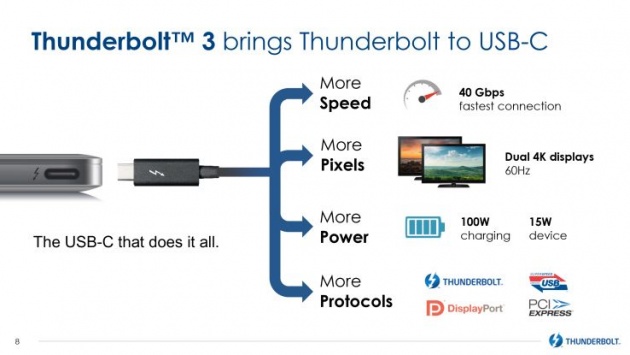
Intel has revealed all about its new Thunderbolt 3 specification at this year’s Computex conference, and it could be the port that best serves Apple’s single I/O vision of the MacBook’s future: Thunderbolt 3 uses a reversible USB-C connector, and includes USB 3.1 support, as well as increasing data transfer speed over Thunderbolt 2 by 100 percent to 40Gbps, and supporting use of up to two 4K displays running at 60Hz simultaneously.
The use of USB-C means that the connector could actually replace the single connector on next year’s version of the new MacBook, for instance, as it’s also capable of up to 100W of power transfer using the USB Power Delivery specification. Support for USB 3.1 means that it will work with current USB-C cables for connecting accessories and adapters, too, as well as supporting the higher bandwidth of Thunderbolt and the additional display connection options.
This could very well be the connector Apple is looking for to help create a MacBook Pro that is spiritually similar to the current 12-inch MacBook, too; it can offer significant advantages to pro users who still operating as a standard connection port for everyday devices, especially as more manufacturers move to use USB-C and USB 3.1 as their default connection standard for things like external hard drives and flash volumes.
Intel says it’ll ship the new connector starting later this year, with full-scale production ramping up in 2016. There’s no doubt in my mind that if things go according to plan, we’ll see MacBooks sporting the connector next year, too – and possibly mobile devices, as well, since the reversible port’s use of USB-C also offers precious component space savings over the current Thunderbolt connector spec.



